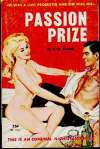“Have you ever been admitted to a mental institution?”
From Tom Stites’s “Guest Posting: Is Media Performance Democracy’s Critical Issue?” (Center for Citizen Media: Blog: 3 July 2006):
And then there were [Walter] Annenberg’s political shenanigans – he shamelessly used his news columns [in The Philadelphia Inquirer] to embarrass candidates who dared to run against his favorites. One day in 1966 a Democrat named Milton Shapp held a press conference while running for governor and Annenberg’s hand-picked political reporter asked him only one question. The question was, “Mr. Shapp, have you ever been admitted to a mental institution?†“Why no,†Shapp responded, and went away scratching his head about this odd question. The next morning he didn’t need to scratch his head any more. A five-column front page Inquirer headline read, “Shapp Denies Mental Institution Stay.†I’m not making this up. I’ve seen the clipping – a friend used to have a framed copy above his desk. Those were not the good old days.
“Have you ever been admitted to a mental institution?” Read More »
 Here are some of the ones I liked: Women’s Doctor. Chinese Lover. Come Sin With Me. Studio Apartment. Musk, Hashish and Blood.
Here are some of the ones I liked: Women’s Doctor. Chinese Lover. Come Sin With Me. Studio Apartment. Musk, Hashish and Blood.